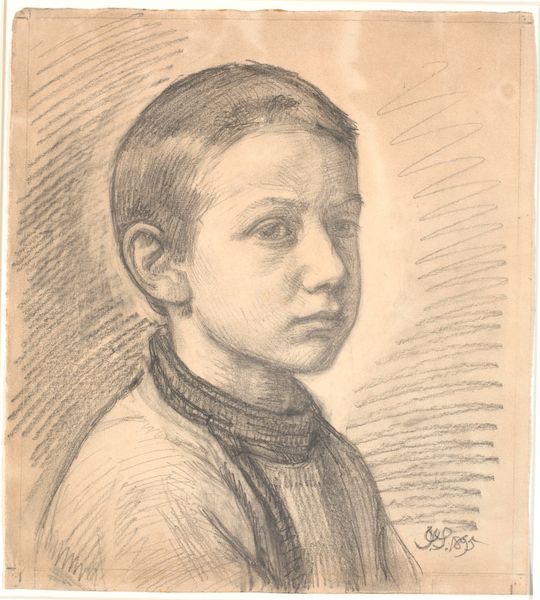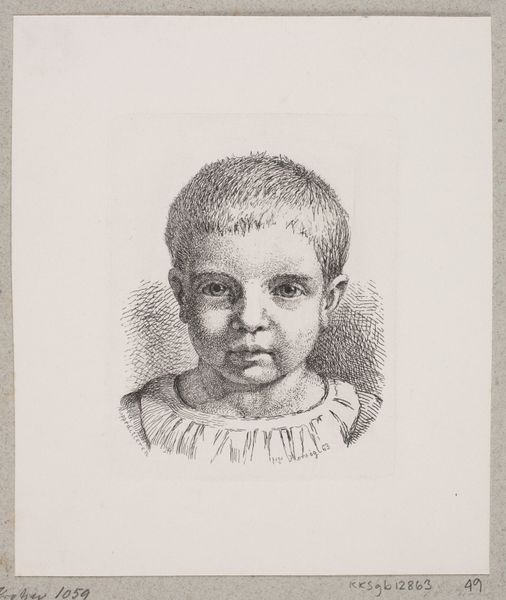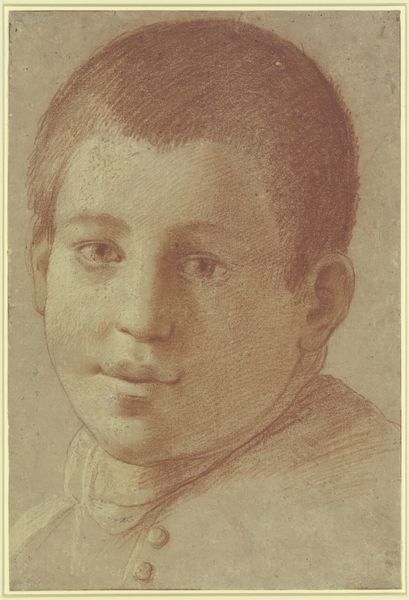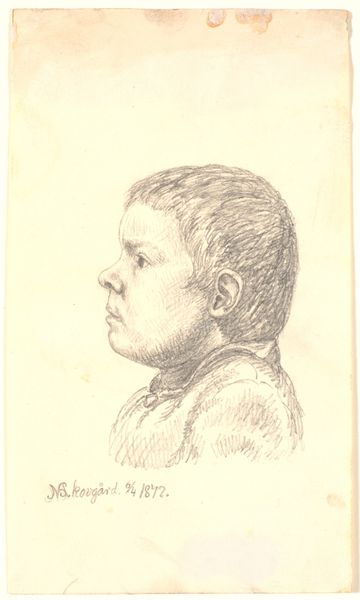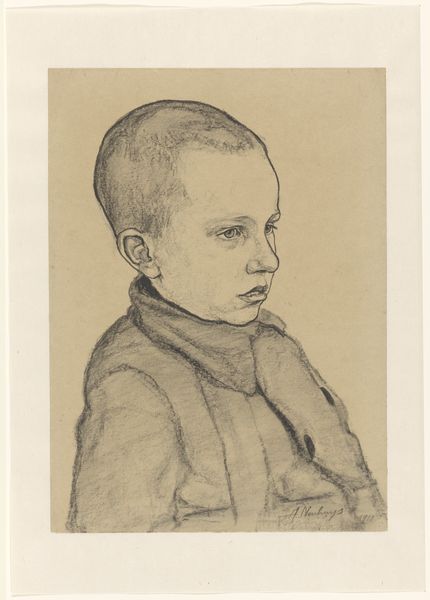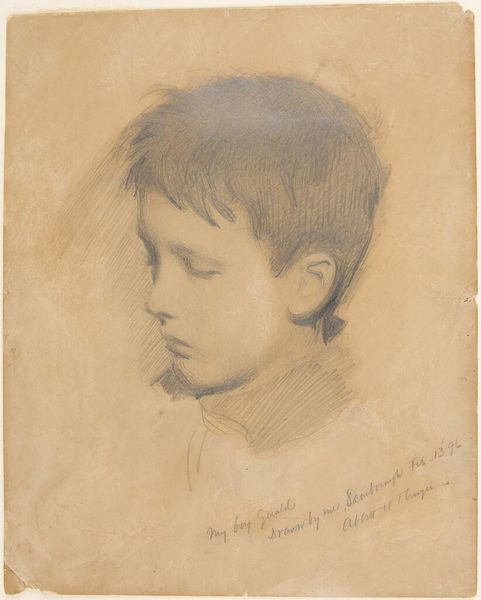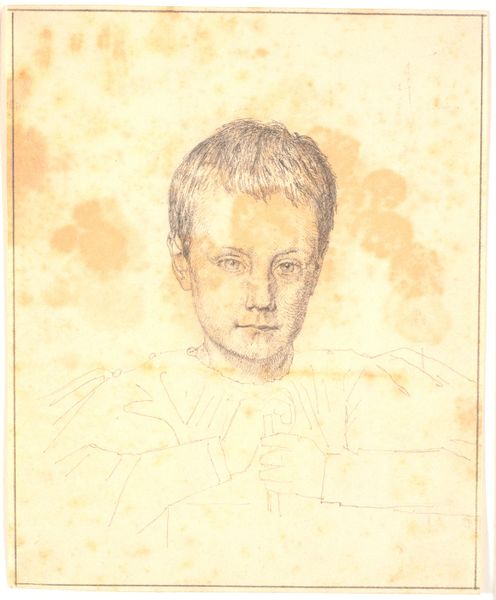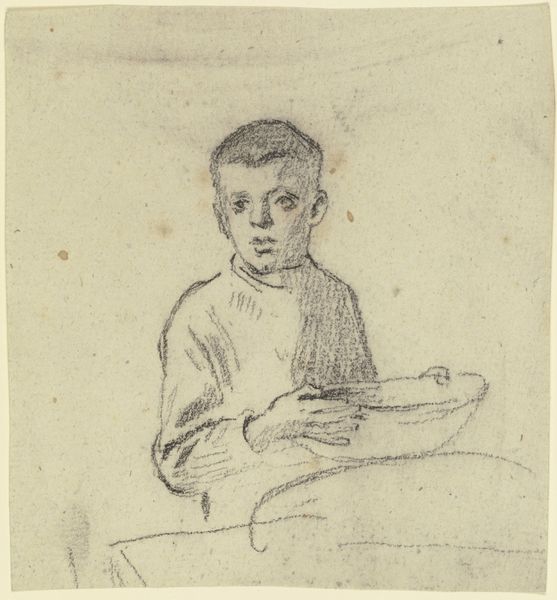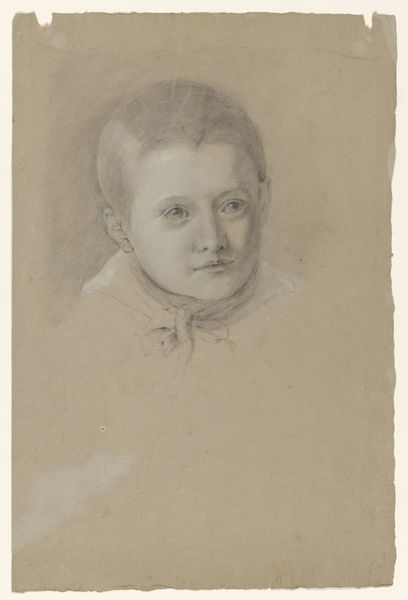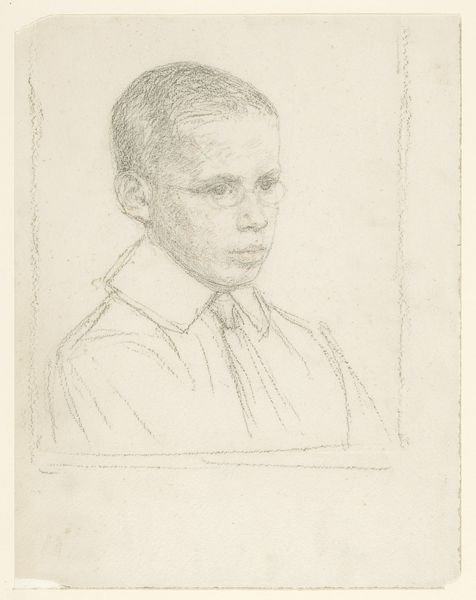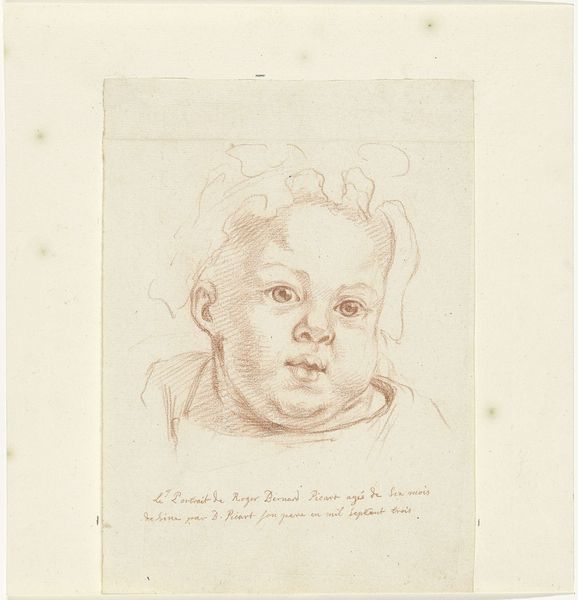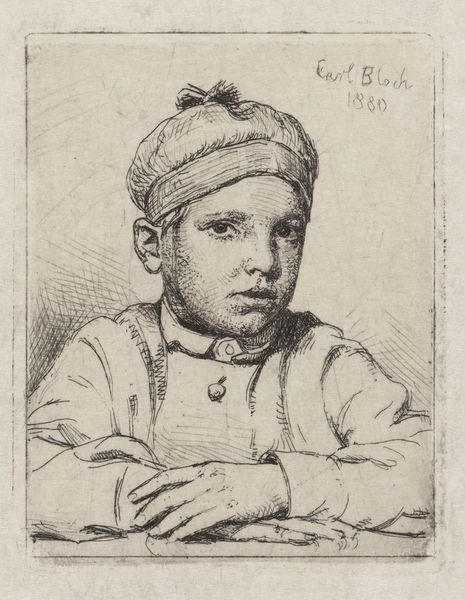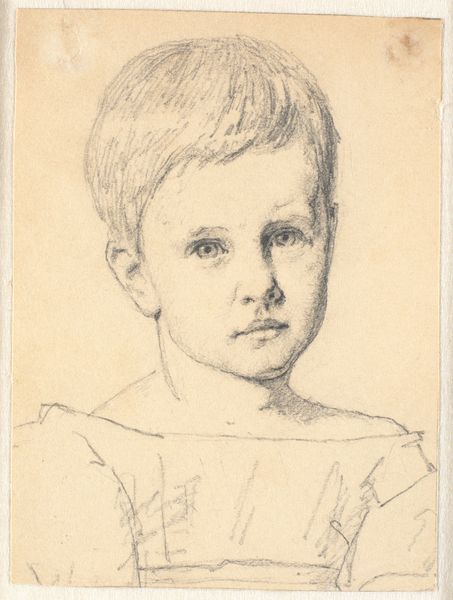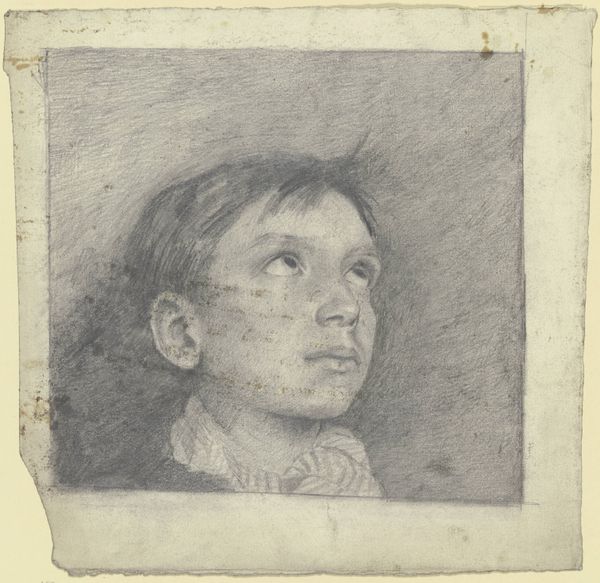
drawing, pencil
#
portrait
#
drawing
#
figuration
#
pencil
#
realism
Dimensions: 222 mm (height) x 154 mm (width) (bladmaal)
Curator: This compelling drawing, rendered in pencil on paper, is entitled "Drengeportræt, 3/4 profil mod venstre"—"Boy Portrait, 3/4 Profile to the Left." It's the work of Joakim Skovgaard and dates to 1872. Currently, it resides here at the SMK, Statens Museum for Kunst. What strikes you when you look at it? Editor: He looks… serious, doesn't he? Almost like he’s contemplating the state of the world. Or maybe just whether he'll get dessert. There’s a vulnerability there, too, in the soft shading around his eyes. It’s deceptive, this level of emotion captured with just a pencil. Makes you wonder about the story behind those eyes. Curator: It's precisely that capacity for realism to convey profound interiority that's so significant. The work enters into discourses of childhood, and representation, opening dialogues around power and the gaze. Think about how Victorian notions of childhood—innocence, potential—inflect Skovgaard's approach. We have to be conscious about considering the socio-political role of art in that period. Editor: Totally. Though, forgetting all that for a second, doesn't he remind you of a slightly grumpy cherub? The way his face is so round, those little hands… but I see what you mean. It's impossible to separate any portrait from its context, the power dynamic inherent in observation. Especially here, when it's an adult representing a child. You can see a tension in trying to catch that fleeting innocence that maybe isn’t really all that innocent. Curator: The artist walks that tightrope skillfully, don’t you think? The detailing around the collar, for example, provides material context – class, perhaps – while also subtly shifting our focus from idealized cherub to something much more anchored in lived experience. This invites questions. Was this a commission? A study? An act of affection? And, moreover, for what intended audiences? Editor: Right, and by drawing attention to the realities of a young boy and suggesting that, as a boy, his identity will have to navigate external social expectations in the 19th century, the work becomes, almost inevitably, politicized. I wonder what became of him? Curator: Indeed. What we bring to a work invariably alters the way it speaks. It is a wonderful reminder to stay inquisitive about the work while being very much alive to the socio-political environment and conditions that gave rise to the aesthetic properties we're so moved by. Editor: Yeah. For me, looking at this, I am more in touch with the universal aspect, the fleetingness of childhood, that in itself brings up such powerful sentiments of political concern with social circumstances for children. I think Skovgaard captured that so profoundly with minimal means, it’s almost dream-like, with a certain nostalgic ache for the ephemeral nature of growing up.
Comments
No comments
Be the first to comment and join the conversation on the ultimate creative platform.
